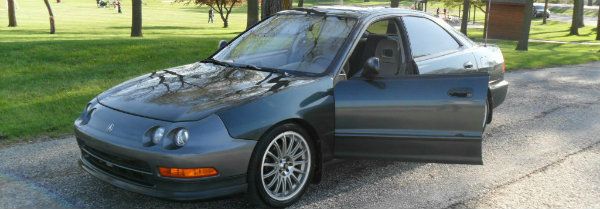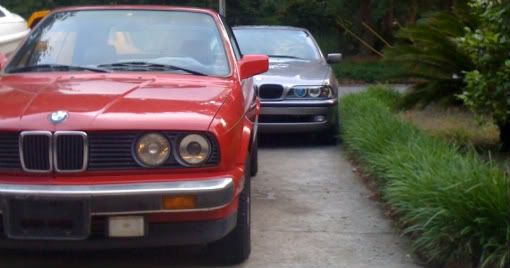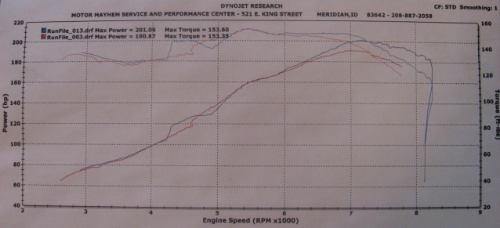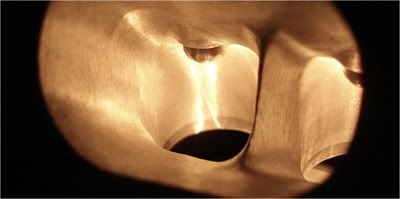saw it in class today.
compared to variants not equiped with this system gains were anywhere from 800hp-1200hp :O
A Turbo-compound engine is a reciprocating engine that employs a blowdown turbine to recover energy from the exhaust gases. The turbine is usually mechanically connected to the crankshaft but electric and hydraulic systems have been investigated as well. The turbine increases the output of the engine without increasing its fuel consumption, thus reducing the specific fuel consumption. The turbine is referred to as a blowdown turbine (or power-recovery turbine), as it recovers the energy developed in the exhaust manifold during blowdown, that is the first period of the exhaust process when the piston still is on its expansion stroke (this is possible since the exhaust valves open before bottom dead center).
THE R-3350 :O(yea im still amazed)
The Wright R-3350 Duplex-Cyclone was one of the most powerful radial aircraft engines produced in the United States. It was a twin row, supercharged, air-cooled, radial engine with 18 cylinders. Power ranged from 2,200 to over 3,700 hp (1,640 to 2,760 kW), depending on the model. First developed prior to World War II, the R-3350's design required a long time to mature before finally being used to power the B-29 Superfortress. After the war, the engine had matured sufficiently to become a major civilian airliner design, notably in its Turbo-Compound forms.
Following the war, in order to better serve the civilian market, the Turbo-Compound[2] system was developed in order to deliver better fuel efficiency ("gas mileage"). In these versions of the engine, three power recovery turbines (PRT) were inserted into the exhaust piping of each group of six cylinders and geared to the engine crankshaft by fluid couplings in order to deliver more power (rather than by using the exhaust to deliver additional boost as in a turbocharger). The PRTs recovered about 20 percent of the exhaust energy (around 500 HP) that would have otherwise been wasted, but unfortunately had a negative effect on engine reliability, causing many aircraft mechanics of the day to nickname them "Parts Recovery Turbines" (and worse).
By this point reliability had improved with the mean time between overhauls at 3,500 hours and specific fuel consumption in the order of 0.4 lb/hp/hour (243 g/kWh). Engines still in use are now limited to 52 inches of Hg manifold pressure, being 2,880 HP with 100/130 octane fuel (or 100LL) instead of the 59.5 inches and 3,400 HP possible with 115/145, or better, octane fuels, which are no longer available.

compared to variants not equiped with this system gains were anywhere from 800hp-1200hp :O
A Turbo-compound engine is a reciprocating engine that employs a blowdown turbine to recover energy from the exhaust gases. The turbine is usually mechanically connected to the crankshaft but electric and hydraulic systems have been investigated as well. The turbine increases the output of the engine without increasing its fuel consumption, thus reducing the specific fuel consumption. The turbine is referred to as a blowdown turbine (or power-recovery turbine), as it recovers the energy developed in the exhaust manifold during blowdown, that is the first period of the exhaust process when the piston still is on its expansion stroke (this is possible since the exhaust valves open before bottom dead center).
THE R-3350 :O(yea im still amazed)
The Wright R-3350 Duplex-Cyclone was one of the most powerful radial aircraft engines produced in the United States. It was a twin row, supercharged, air-cooled, radial engine with 18 cylinders. Power ranged from 2,200 to over 3,700 hp (1,640 to 2,760 kW), depending on the model. First developed prior to World War II, the R-3350's design required a long time to mature before finally being used to power the B-29 Superfortress. After the war, the engine had matured sufficiently to become a major civilian airliner design, notably in its Turbo-Compound forms.
Following the war, in order to better serve the civilian market, the Turbo-Compound[2] system was developed in order to deliver better fuel efficiency ("gas mileage"). In these versions of the engine, three power recovery turbines (PRT) were inserted into the exhaust piping of each group of six cylinders and geared to the engine crankshaft by fluid couplings in order to deliver more power (rather than by using the exhaust to deliver additional boost as in a turbocharger). The PRTs recovered about 20 percent of the exhaust energy (around 500 HP) that would have otherwise been wasted, but unfortunately had a negative effect on engine reliability, causing many aircraft mechanics of the day to nickname them "Parts Recovery Turbines" (and worse).
By this point reliability had improved with the mean time between overhauls at 3,500 hours and specific fuel consumption in the order of 0.4 lb/hp/hour (243 g/kWh). Engines still in use are now limited to 52 inches of Hg manifold pressure, being 2,880 HP with 100/130 octane fuel (or 100LL) instead of the 59.5 inches and 3,400 HP possible with 115/145, or better, octane fuels, which are no longer available.













Comment